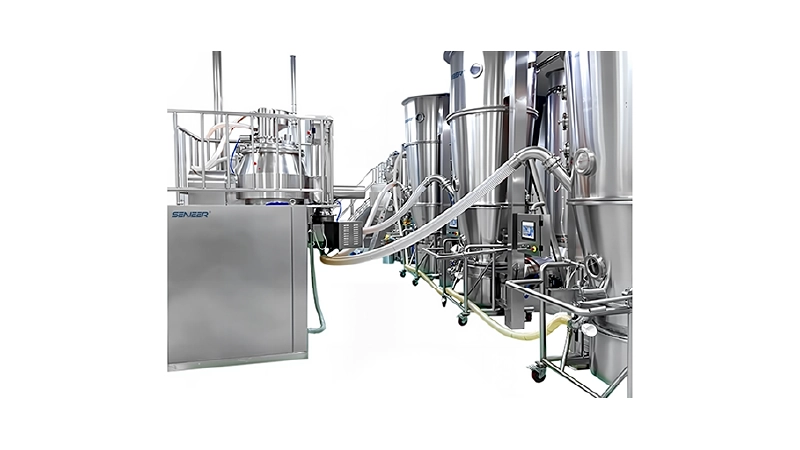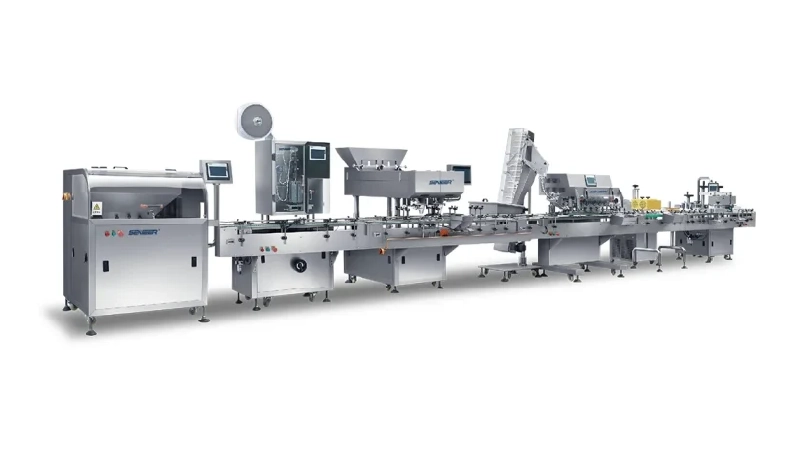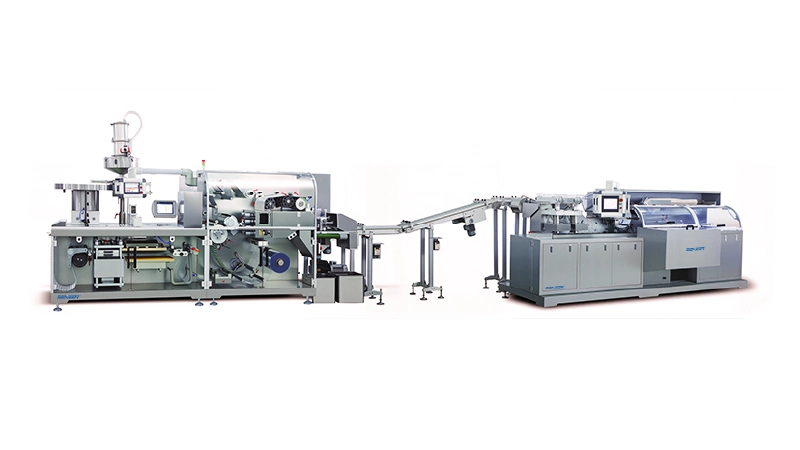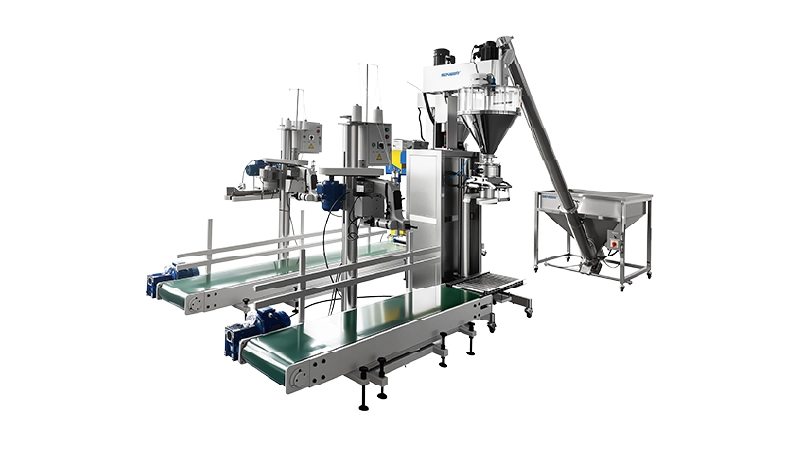CMC stage research is an important aspect of drug development, but there is a certain difference between the CMC stage research of innovative drugs and generic drugs, and through the analysis of the difference between CMC research between the two, it is explained that innovative drug research and development is explained The cmc is necessary to carry out phased requirements.
With the support of the state for innovation, China’s enterprises and research units with certain strength have developed drugs with independent intellectual property rights, and the number of declarations of innovative drugs is increasing, but because domestic enterprises have long been imitation-based research and development models, their concepts, ideas and methods are carried out in the research and development of innovative drugs, so there is a certain lack of design and research work for drug development. According to the practice of the review work, the current problems in the cmC declaration of innovative drugs are analyzed as a reference for drug research and development.
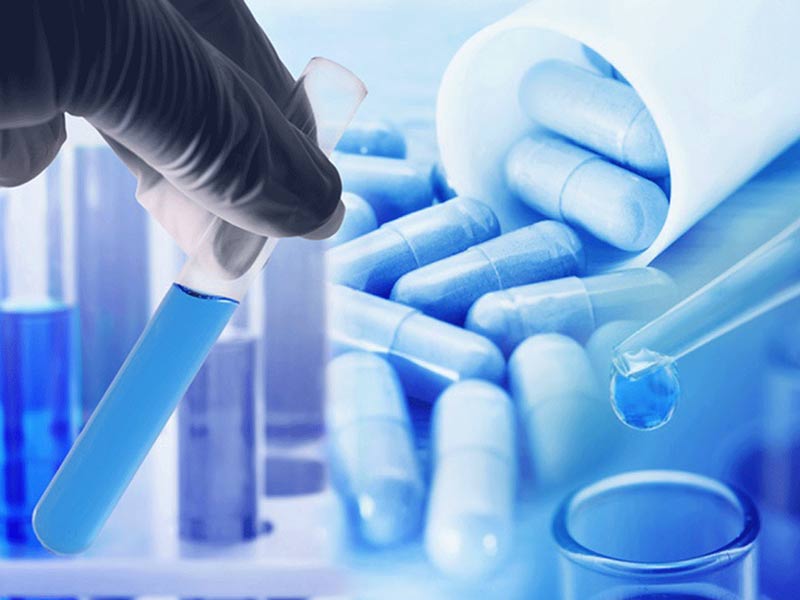
First, The Difference Between Generic Drugs And Innovative Drug Research And Development In CMC
1.CMC Studies Of Generic Drugs Are Relatively Clear
(1) Structure And Properties
The structure, physicochemical properties of generic drugs are also relatively clear, and there is no need to re-screen and study the structure of the compound, and the structural and physicochemical properties are mainly studied and verified with the listed products.
(2) Dosage Form, Specification And Prescription
Since the imitated product has been listed, its dosage form, the dosage used has been clarified, the dosage form and specification have been determined, for the imitation manufacturer needs to prove the consistency of its products and the listed products, in general, there is no need to re-conduct research on the selection of dosage forms, the exploration of dosages and specifications, but it is necessary to carry out detailed prescription, process research work, and need to be compared with the listed products, especially for special dosage forms, it is necessary to carry out comprehensive and in-depth screening studies of the prescription process.
(3) Quality Research
Relatively simple, for imitation products, because the main component structure and physicochemical properties have been clarified, its efficacy and toxic side effects are known, and its work focuses on conducting relevant quality studies according to the process or prescription of the imitation product, selecting appropriate methods, and conducting qualitative and quantitative studies on newly generated impurities, formulating reasonable limits, and determining reasonable inspection items in the standard.
(4) Stability
Since the imitation product has been listed, the storage conditions and expiration date have been clarified in the instructions, and the imitation manufacturer only needs to conduct relevant stability studies according to the prescription process of their own products, select reasonable packaging materials, determine the appropriate storage conditions, and formulate the validity period of their own products.
2.Innovative Medicines Are Uncertain
- Properties Of The Compound
A lot of exploration and research work is required to obtain information on the solubility, particle size, and crystal form of the compound, as well as the impact on the stability and absorption of the product.
- Dosage Forms And Specifications
For innovative drugs, what kind of dosage form to choose in order to reduce the toxicity of the compound as much as possible, improve the efficacy, which is a very important aspect of new drug development, if the dosage form selection is not appropriate, it will lead to the failure of drug development, the dosage form selection should be based on the results of pharmacology and toxicology and clinical research and need to be combined with the nature of the compound to determine, at the same time, the selection of reasonable specifications must also be based on the relevant pharmacological toxicology and clinical research results.
- Quality Studies
Due to the uncertainty of the nature and dosage form of the developed compounds, in the quality study needs to be carried out in-depth research, the method of relevant substance inspection and content determination is explored to determine the appropriate method, the relevant impurities need to be qualitatively and quantitatively studied, and the limits of impurities need to be determined according to the results of pharmacological toxicology or clinical research and combined with the research results of the preparation process.
- Stability
In the face of the stability of a brand new drug, how light, temperature and humidity affect it are unknown, it is necessary to conduct continuous in-depth research, gradually understand and understand, and select suitable packaging materials according to the characteristics of drugs and dosage forms, determine the packaging of drugs, formulate the expiration date of products, and at the same time consider the climate of different listed countries and regions, it may be necessary to conduct multi-climate zone stability studies.
Therefore, the research purpose and focus of innovative drugs and generic drugs CMC are different, the main reason is that innovative drugs have uncertainty in their research and development process, and the dosage forms, specifications and prescriptions of drugs need to be changed accordingly in combination with their toxicity and effectiveness to achieve the purpose of the lowest toxicity and the best efficacy, so the research and development of innovative drugs is staged, and the research focus of CMC at different stages is different.

Second, The Necessity Of CMC Phased Requirements In Innovative Drug Research And Development
1.ThePhased Study Of CMC Is In Line With The Law Of Drug Development
The research and development of innovative drugs is a long-term, complex process, in this process, with the continuous deepening of the pharmacological and toxicological effects of compounds, efficacy, etc., the developers will continue to evaluate and evaluate the medicinal prospects of the target compound, that is, whether it is worth continuing to develop in depth, because the cost of comprehensive development is much higher, in order to reduce risks, at this stage the research will be stopped at any time, and the target compound will be abandoned at any time. When conducting cmC research, its main purpose is to combine the results of pharmacology and toxicology to ensure the safety of the target compound and ensure that the quality of the target compound is basically controllable. During this period, according to the needs of clinical research, the dosage form, prescription process, specifications, etc. of the drug will change, and when the CMC research is carried out at this stage, the “general” method is generally adopted, and the quality control project adopts the conventional control project, the purpose is to ensure the basic controllability and consistency of the quality of the compound.
2.SecurityGuarantee
In the early stages of drug development, the safety and efficacy of drugs mainly lies in the results of animal experiments, CMC is not the decisive factor, through animal experimental studies, to determine the safety and efficacy of the target compound. Usually, the toxicity of the drug at this stage is mainly considered to be derived from the active ingredient, and impurities are not the main aspect.
In phase I or II.a clinical studies, the number of patients is small, the duration is usually short, and strict monitoring of adverse events is required at the time of clinical studies, and the inclusion period of subjects is staggered in an orderly manner. In the whole process of clinical research, the regulatory authorities need to carry out continuous and strict supervision and management. This series of measures can minimize the risk of patients.
3.Limited Batches Of Drugs Also Limit In-Depth Research
In the initial stage of the study, due to the small number of sample batches produced and the accumulation of data, the limits of some indicators cannot be determined, and the preliminary limits are mainly determined according to the results of safety, and will gradually clarify and determine with the continuous deepening of research and development.
Therefore, the research and development of innovative drugs is a phased process, according to the research results of different stages to determine the content and key work of the study, CMC’s phased research has a certain scientific nature, can avoid unnecessary work, save research and development costs, and has important significance for the development of drugs.
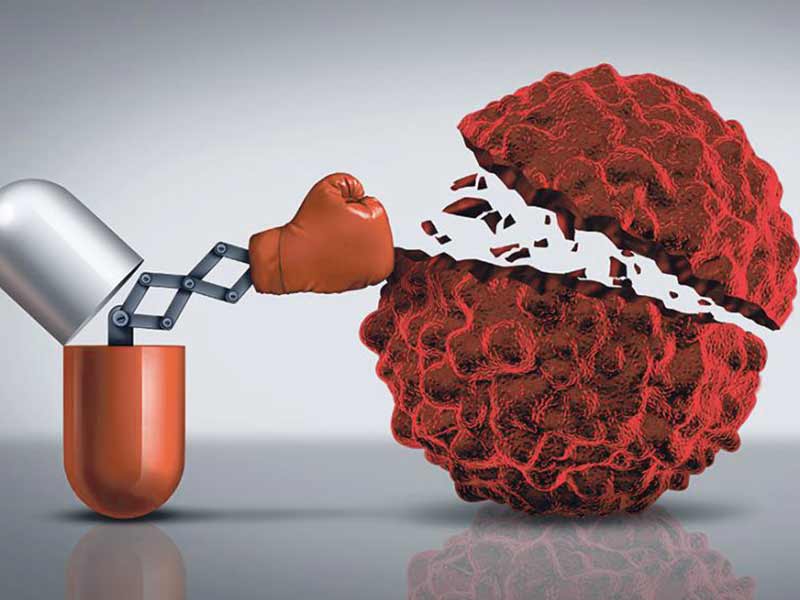
Third, The CMC Research Focus Of Each Stage
Since the research of innovative drugs is a long-term complex work, its research work can be divided into different stages, and it is divided into the following stages according to the characteristics of the research and development work: the research stage (preclinical research, phase I clinical research), the comprehensive development stage (phase II clinical research, III. Phase clinical research), marketing application stage and post-marketing stage, a compound in all stages of research and development may be eliminated, its prescription, specifications, preparation methods, etc. will have certain changes, so the focus of research at different stages is different.
1.Research Stage
Generally, it includes preclinical studies and phase I clinical studies. This stage belongs to the early stage of drug development, and it is also the stage with the highest elimination rate, generally speaking, the elimination rate at this stage is more than 85%. When conducting phase I clinical studies, there are fewer patients and shorter cycles, so CMC studies mainly ensure the controllability of drug quality. For example, in the stability study, as long as the quality of the phase I clinical study can be guaranteed to be stable. At the same time, because the detection of clinical trials is very strict in the early stage of clinical trials, the safety of drugs is also guaranteed.
(1) The Nature Of The Compound
There should be a clear understanding of the properties of the compound, on the one hand, a comprehensive understanding of the properties of the compound can provide an important basis for the selection of dosage forms and prescriptions; On the other hand, the structure of the compound is clarified, which can ensure the stability of the compound and ensure the consistency of the drugs in subsequent research.
(2) Dosage Forms, Prescriptions And Specifications
Since this stage is the initial stage of drug development, with the deepening of the study of the dosage form, prescription may change, at the same time, the specifications of the compound are not clear, so the design of the dosage form and prescription needs to ensure the consistency of the quality of the preparation and the controllability of impurities under the premise of ensuring safety.
(3) Process Research
At this stage, because the development value of the compound has not yet been clarified, therefore, the focus of research and development is to prepare sufficient raw materials and preparations for pharmacology and toxicology and phase I clinical research, but also to meet the research needs of CMC, the research of the process is basically carried out in the laboratory, in general, there is no need to optimize the process, but to the impurities produced in the process (reaction by-products, organic solvents, heavy metals, etc.) for effective control.
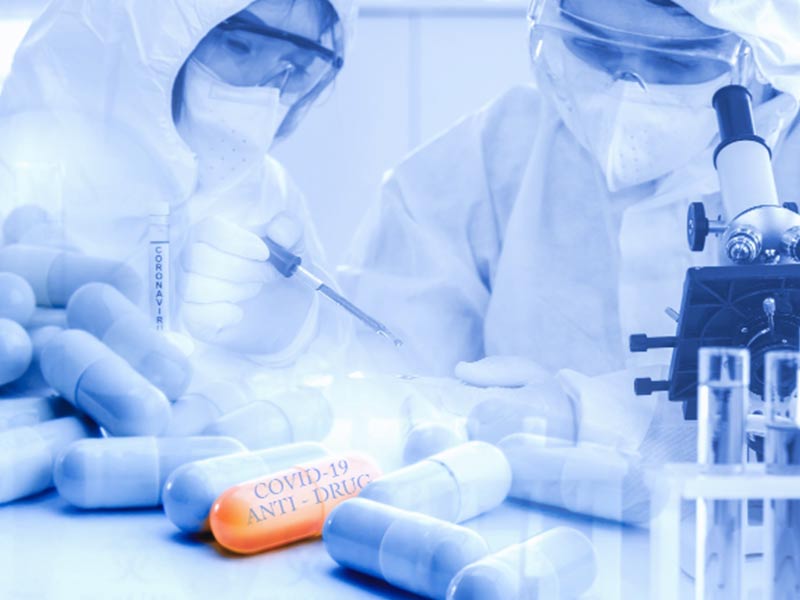
(4) Quality Control
Quality research at this stage focuses on the use of “general” methods, such as conducting relevant research in accordance with the general requirements of pharmacopoeia for APIs and preparations to ensure that the quality of the compound is controllable. For APIs, according to the starting materials used, the obtained intermediates and their impurities are determined, the test items, methods and quality standards are determined. It should be noted that the impurity content level of APIs used to prepare clinical samples, such as residual solvents or heavy metals, should fully comply with the requirements of the corresponding regulations and guidelines. At the same time, this phase of the study needs to propose an acceptable limit based on clinical trial or safety data, and this limit needs to be supported by relevant data (e.g., the maximum permissible level of solvent intake per day). The impurity level of the API used in clinical research should not be lower than the impurity level of the API used in non-clinical research (safety aspect).
(5) Stability
Initial stabilization studies are required to see if the prepared samples can support the relevant research of the product. Because the formulation process of compounds can change, only protocols and data for preliminary stability studies need to be provided.
2.Comprehensive Development Stage
This stage generally includes phase II and phase III clinical research, which belongs to the comprehensive development stage of the drug, and through the comprehensive study of the toxicity and efficacy of the compound, the development value of the proposed compound has been fully understood. In this stage of research, for CMC, it is necessary to make appropriate changes to the dosage form, prescription, and specification of the drug to achieve the purpose of reducing toxicity and improving efficacy. It should be noted that if the prescription, process or raw materials used change, the relevant bridging test should be carried out. Through the detailed study of CMC, relevant materials are also prepared for the filing stage for listing approval.
(1) Prescription
After pre-clinical and clinical research, especially after phase III clinical research, the dosage form of the drug was basically determined and the specifications of the drug were clarified. Therefore, a detailed study and screening of the prescription of the drug is required, and the prescription of the drug under investigation after this stage should be basically determined.
(2) Craftsmanship
Clinical samples need to be prepared in GMP-compliant workshops. For THE API preparation process after continuous exploration, basic maturity, the process route is basically determined, the need for amplification experiments for clinical use, while the process conditions need to be studied in detail and optimized, so that it meets the needs of industrial production. For example, to determine the source and specification of starting materials and reagents used or organic solvents, internal control standards need to be formulated for starting materials; Optimize the reaction conditions according to the possible by-products to reduce the generation of impurities, and determine the control standards for intermediates; Relatively fixed process conditions, determine important process parameters, especially after the completion of phase III clinical. For the preparation, since the prescription and specifications of the drug are relatively clear, it is necessary to conduct a detailed study of the process of the preparation and determine the process parameters, and for sterile products, the sterile process needs to be determined. At this stage, the preparation process of the drug (including APIs and preparations) requires an industrialized amplification study at the production plant. The main purpose is, first, to prepare for future commercial production. Second, identify and identify the differences that arise during the scale-up process. Third, determine the parameters of the key process. Fourth, determine and verify the controllability of the analytical method.
(3) Quality Control

Given that the prescribing process of the drug is basically determined, a comprehensive quality study is required, qualitative and quantitative for impurities in the drug, and its limits are determined based on the relevant research results. Detailed methodological studies are required for substance inspection and content determination to examine the feasibility of the method. At the same time, the quality control standards of the drug should be formulated according to the characteristics, prescription and process of the drug.
(4) Stability
When completing the phase III clinical study, a comprehensive study of the stability of the drug should be carried out, a reasonable stability study plan should be formulated, the appropriate packaging should be selected, and a comprehensive stability study should be conducted to determine the storage conditions and validity period of the drug.
Therefore, the development value of drugs in the comprehensive development stage, especially after phase III. clinical practice, is basically clear, and the research work of CMC is fully carried out to prepare for the marketing of drugs.
3.Listing Application Stage
After preclinical research and clinical research, there is a full understanding of the value of the drug, after weighing the pros and cons, if the research unit makes a decision to go public, it needs to be approved by the drug regulatory authority to implement, so it is necessary to prepare relevant declaration materials according to the relevant regulations and technical requirements, according to the previous research results, and report for approval.
In the technical review of the drug, the following research was found in the CMC review to have certain deficiencies, which should be paid attention to when conducting the study:
(1) BCS Classification
Clarifying which type of compound the target compound belongs to in the BCS classification system facilitates the selection of dosage forms and the recognition of compound properties, and is conducive to drug development.
(2) The Choice Of Crystal Form And Particle Size
In drug research and development, it is often overlooked that the crystal form and particle size of drugs with poor water solubility have a certain impact on the toxicity and efficacy of drugs, and in-depth research on this is conducive to drug development.
(3) Sterilization Process Conditions
The sterilization process of the drug has a great impact on the safety of the drug, so in the drug process research, a comprehensive and in-depth study of the sterilization process conditions should be carried out to ensure the quality of the drug.
(4) Stability Study
Attention should be paid to changes in packaging sealing systems that affect product quality, which is an important aspect of ensuring the quality of drugs.

4.Post-MarketingStage
After the drug is approved for marketing, in view of various reasons, the prescription, process, source and specification of raw materials and excipients of the drug will be changed accordingly, and the specific requirements are referred to the upcoming “Technical Guidelines for the Study of Changes in Listed Chemical Drugs”.






